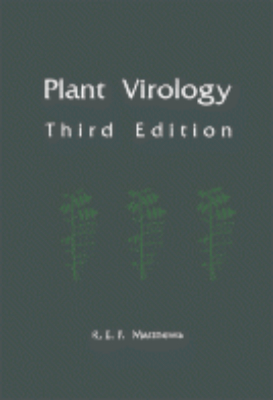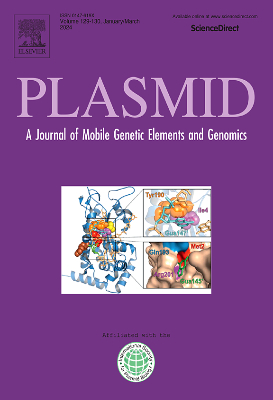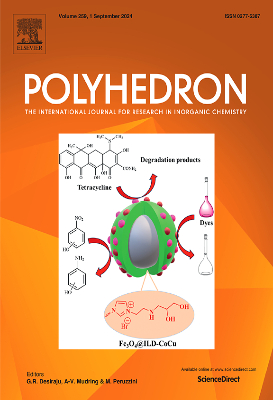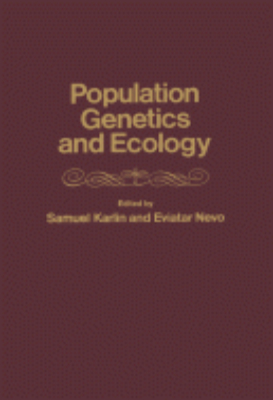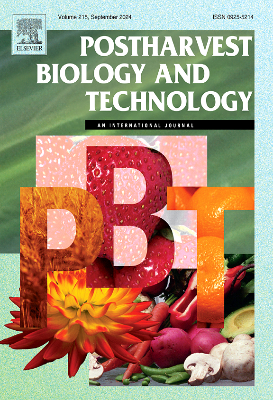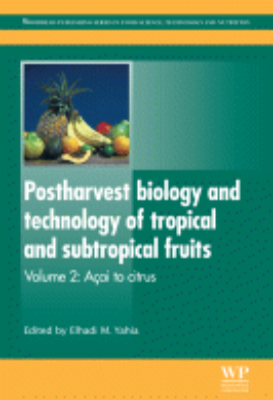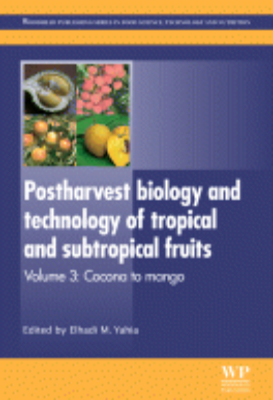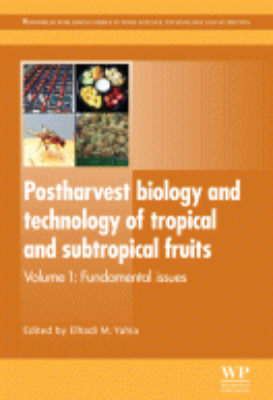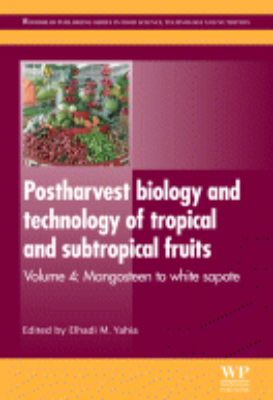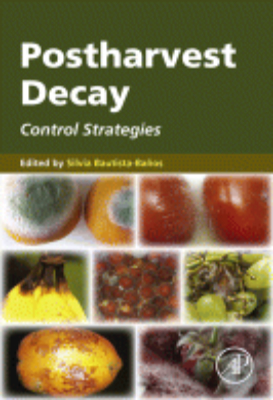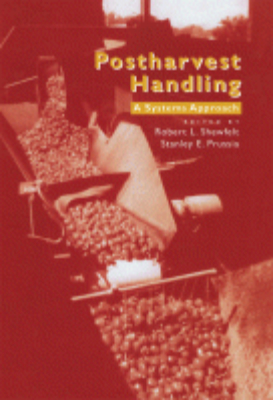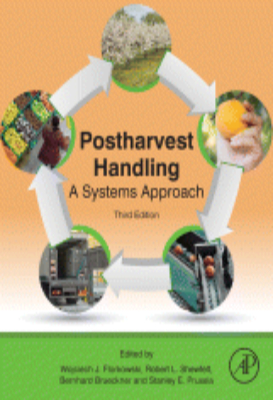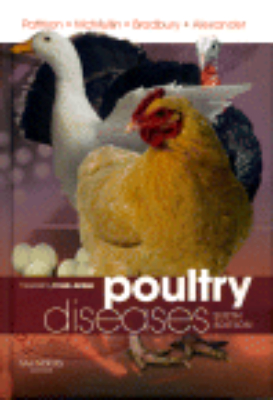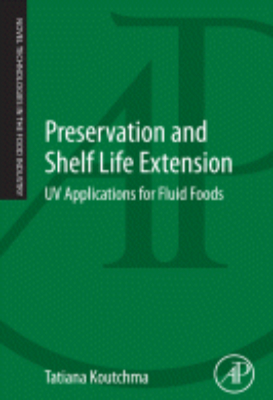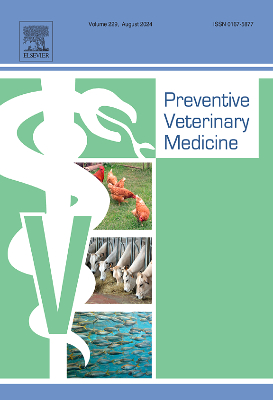E-Resources
Plant Transcription Factors
"Plant Transcription Factors: Evolutionary, Structural and Functional Aspects is the only publication that provides a comprehensive compilation of plant transcription factor families and their complex roles in plant biology. While the majority of information about transcription factors is based on mammalian systems, this publication discusses plant transcription factors, including the important aspects and unifying themes to understanding transcription factors and the important roles of particular families in specific processes. Key Features. Provides an entry point for transcription factor literature. Offers compilation of information into one single resource for rapid consultation on different plant transcription factor features. Integrates the knowledge about different transcription factors, along with cross-referencing. Provides information on the unique aspects surrounding plant transcription factors"
Plant Virology: Second Edition 1981
Plant Virology, Second Edition, was written to cover the substantial developments in many areas of plant virology since the first edition was published. Advances have been made in all branches of the subject, but these have been most far reaching with respect to the structure of viruses and of their components, and in the understanding of how viral genomes are organized and how viruses replicate in cells. Significant developments have also occurred in the understanding of how viruses are transmitted by invertebrates and in the application of control measures for specific diseases. The taxonomy of viruses has advanced significantly, and there are now 25 internationally approved families and groups of plant viruses. All these developments have required that most sections be entirely rewritten. This book is intended primarily for graduate students in plant pathology, plant virology, general virology, and microbiology, and for teachers and research workers in these fields. It should also prove useful to some people in related disciplinesmolecular biologists, biochemists, plant physiologists, and entomologists.
Plant Virology: Third Edition 1991
Major developments have taken shape in the ten years since the publication ofPlant Virology, Second Edition. This Third Edition of the leading comprehensive text and reference for the field contains more than sixty percent new material, including applications and results of gene manipulation techniques. As with the first and second editions, this volume covers all aspects of plant virology, from molecular to ecological.Plant Virology, Third Edition, is intended for graduate students, researchers, and teachers in plant virology, plant pathology, general virology, and microbiology, and scientists in related areas of molecular biology, biochemistry, plant physiology, and entomology.
Plants and Organelles
Nucleotide Sequences 1986/1987, Volume IV: Plants and Organelles presents data that reflect the information found in GenBank Release 44.0 of August 1986. This book provides information pertinent to the unique international collaboration between two leading nucleotide sequence data libraries, one based in Europe and one in the United States. Organized into two sections, this volume begins with an overview of the sequences, some basic identifying information, and some of the biological annotations. This text then discusses the EMBL Nucleotide Sequence Data Library, an international center of fundamental research with its main focus in the fields of cell biology, molecular structures, instrumentation, and differentiation. This book discusses as well the GenBank database established in 1982 by the National Institute of General Medical Sciences of the U.S National Institutes of Health. This book is a valuable resource for molecular biologists and other investigators collecting the large number of reported DNA and RNA sequences and making them available in computer-readable form.
Plants Chemicals and Growth: Volume 1
Plants, Chemicals and Growth investigates natural and synthetic chemicals that control plant growth and development. It examines how plant growth regulators, such as 2,4-D, 2,4-dichlorophenoxyacetic acid, 2,4,5-T, 2,4,5-trichlorophenoxyacetic acid, ammonium sulfamate, indole-3-butyric acid, disodium 3,6-endoxohexahydrophthalate, gibberellic acid, and 2-chloroethyltrimethylammonium chloride, induce biological responses in plants. These responses range from tropism and chemotropism to growth of organs by cell division and enlargement, rhythmic phenomena in growth and development, initiation of lateral organs and problems of phyllotaxy, and the regulatory effects of light and temperature on growth and form. Comprised of 10 chapters, this volume begins with an overview of chemical regulators and the ways in which they elicit biological responses in plants; how chemical regulation of plants is related to the growth and development of flowering plants; cell growth and cell division; cell cycle; and cellular ontogeny. It then looks at the history and modern concepts of growth-regulating compounds, such as auxins, cytokinins, and gibberellins. The book introduces readers to how chemicals induce growth in quiescent cells; natural sources of growth stimulatory substances; synergisms and interactions of growth regulatory systems; growth-regulating effects in free cell systems; examples of biologically active compounds; the mechanisms of action of plant growth regulators; concepts and interpretations of plant growth regulation; and prospects and problems associated with chemical regulation of plant growth and behavior. Teachers, biology students, agriculturalists, and researchers will find this book extremely useful.
Plants Chemicals and Growth: Volume 2
Plants, Chemicals and Growth focuses on chemicals that regulate the growth and development of plants. It explores the problems of growth and growth regulation by looking at the roles of chemical substances, natural and synthetic, which affect the behavior of the cells of flowering plants. It also describes the variety of responses triggered by such chemicals, which include herbicides, those that stimulate the rooting of cuttings or cause leaf or fruit abscission, and those associated with fruit setting and artificial parthenocarpy. Comprised of 10 chapters, this volume begins with an overview of examples of chemical regulators and the biological responses they induce in plants, from tropism and chemotropism to nastic responses; rhythmic phenomena in growth and development; initiation of lateral organs and problems of phyllotaxy; periodicities in growth; and effects on the balance between vegetative growth, flowering, and fruiting. It discusses the totipotency and exogenous regulation of cells, history and modern concepts of plant growth regulators, the ways chemicals induce growth in quiescent cells, and growth-regulating effects in free cell systems. The reader is also introduced to biologically active compounds, such as indolyl and triazine compounds; how plant-regulating substances work; concepts and interpretations of plant growth regulation; and problems and prospects of chemical regulation of plant growth and development. This book will be of interest to teachers, biology students, agriculturalists, and researchers.
Polyphenols in Plants
"Polyphenols in Plants assists plant scientists and dietary supplement producers in assessing polyphenol content and factors affecting their composition. It also aids in selecting sources and regulating environmental conditions affecting yield for more consistent and function dietary supplements. Polyphenols play key roles in the growth, regulation and structure of plants and vary widely within different plants. Stress, growth conditions and plant species modify polyphenol structure and content. This book describes techniques to identify, isolate and characterize polyphenols, taking mammalian toxicology into account as well. Key Features. Defines conditions of growth affecting the polyphenol levels. Describes assay and instrumentation techniques critical to identifying and defining polyphenols, critical to researchers and business development. Documents how some polyphenols are dangerous to consume, important to dietary supplement industry, government regulators and lay public users"
Population Genetics and Ecology
Population Genetics and Ecology is a collection of papers presented at a 1975 conference-workshop held in Israel and is devoted to topics in population genetics and ecology. Contributors discuss topics related to population genetics and ecology, including the determinants of genetic variation in natural populations; experimental design and analysis of field and laboratory data; and theory and applications of mathematical models in population genetics. The book describes a number of field and laboratory studies that focus on a variety of spatial and temporal character and enzyme frequency patterns in natural populations, along with possible associations between these patterns and ecological parameters. This volume is organized into three sections encompassing 31 chapters and begins by summarizing the results of field and laboratory research that investigated gene frequency patterns in space and time of animal and plant populations. This book then explains the origin of new taxa; animal and plant domestication; variation in heritability related to parental age; and problems in the genetics of certain haplo-diploid populations. The next section offers a combination of data analyses and interpretations of related models, with some papers devoted to the origin of race formation and the interaction between sexual selection and natural selection. Among the theoretical studies presented are facets of selection migration interaction; stochastic selection effects; properties of density and frequency dependent selection; concepts and measures of genetic distance and speciation; aspects of altruism; and kin selection. This book will be of interest to naturalists, experimentalists, theoreticians, statisticians, and mathematicians.
Postharvest Biology and Technology of Tropical and Subtropical Fruits: 2011 A?ai to Citrus
"While products such as bananas, pineapples, kiwifruit and citrus have long been available to consumers in temperate zones, new fruits such as lychee, longan, carambola, and mangosteen are now also entering the market. Confirmation of the health benefits of tropical and subtropical fruit may also promote consumption further. Tropical and subtropical fruits are particularly vulnerable to postharvest losses, and are also transported long distances for sale. Therefore maximising their quality postharvest is essential and there have been many recent advances in this area. Many tropical fruits are processed further into purees, juices and other value-added products, so quality optimization of processed products is also important. The books cover current state-of-the-art and emerging post-harvest and processing technologies. Volume 1 contains chapters on particular production stages and issues, whereas Volumes 2, 3 and 4 contain chapters focused on particular fruit. Chapters in Volume 2 review the factors affecting the quality of different tropical and subtropical fruits from aai to citrus fruits. Important issues relevant to each product are discussed, including means of maintaining quality and minimizing losses postharvest, recommended storage and transport conditions and processing methods, among other topics. With its distinguished editor and international team of contributors, Volume 2 of Postharvest biology and technology of tropical and subtropical fruits, along with the other volumes in the collection, will be an essential reference both for professionals involved in the postharvest handling and processing of tropical and subtropical fruits and for academics and researchers working in the area. Key Features. Along with the other volumes in the collection, Volume 2 is an essential reference for professionals involved in the postharvest handling and processing of tropical and subtropical fruits and for academics and researchers working in the area. Reviews the factors affecting the quality of different tropical and subtropical fruits from aai to citrus fruits. Important issues relevant to each particular fruit are discussed, including means of maintaining quality and minimising losses postharvest, recommended storage and transport conditions"
Postharvest Biology and Technology of Tropical and Subtropical Fruits: 2011 Cocona to Mango
"While products such as bananas, pineapples, kiwifruit and citrus have long been available to consumers in temperate zones, new fruits such as lychee, longan, carambola, and mangosteen are now also entering the market. Confirmation of the health benefits of tropical and subtropical fruit may also promote consumption further. Tropical and subtropical fruits are particularly vulnerable to postharvest losses, and are also transported long distances for sale. Therefore maximising their quality postharvest is essential and there have been many recent advances in this area. Many tropical fruits are processed further into purees, juices and other value-added products, so quality optimization of processed products is also important. The books cover current state-of-the-art and emerging post-harvest and processing technologies. Volume 1 contains chapters on particular production stages and issues, whereas Volumes 2, 3 and 4 contain chapters focused on particular fruit.Chapters in Volume 3 of this important collection review factors affecting the quality of different tropical and subtropical fruits, concentrating on postharvest biology and technology. Important issues relevant to each specific product are discussed, such as postharvest physiology, preharvest factors affecting postharvest quality, quality maintenance postharvest, pests and diseases and value-added processed products, among other topics. Key Features. Along with the other volumes in the collection, Volume 3 is an essential reference for professionals involved in the postharvest handling and processing of tropical and subtropical fruits and for academics and researchers working in the area. Covers current state-of-the-art and emerging post-harvest and processing technologies. Important issues relevant to each particular fruit are discussed, such as postharvest physiology, preharvest factors affecting postharvest quality and pests and diseases"
Postharvest Biology and Technology of Tropical and Subtropical Fruits: 2011 Fundamental Issues
"Tropical and subtropical fruits are popular products, but are often highly perishable and need to be transported long distances for sale. The four volumes of Postharvest biology and technology of tropical fruits review essential aspects of postharvest biology, postharvest technologies, handling and processing technologies for both well-known and lesser-known fruits. Volume 1 contains chapters on general topics and issues, while Volumes 2, 3 and 4 contain chapters focused on individual fruits, organised alphabetically.Volume 1 provides an overview of key factors associated with the postharvest quality of tropical and subtropical fruits. Two introductory chapters cover the economic importance of these crops and their nutritional benefits. Chapters reviewing the postharvest biology of tropical and subtropical fruits and the impact of preharvest conditions, harvest circumstances and postharvest technologies on quality follow. Further authors review microbiological safety, the control of decay and quarantine pests and the role of biotechnology in the improvement of produce of this type. Two chapters on the processing of tropical and subtropical fruit complete the volume.With its distinguished editor and international team of contributors, Volume 1 of Postharvest biology and technology of tropical and subtropical fruits, along with the other volumes in the collection, will be an essential reference both for professionals involved in the postharvest handling and processing of tropical and subtropical fruits and for academics and researchers working in the area. Key Features. Along with the other volumes in the collection, Volume 1 is an essential reference for professionals involved in the postharvest handling and processing of tropical and subtropical fruits and for academics and researchers working in the area. Focuses on fundamental issues of fruit physiology, quality, safety and handling relevant to all those in the tropical and subtropical fruits supply chain. Chapters include nutritional and health benefits, preharvest factors, food safety, and biotechnology and molecular biology"
Postharvest Biology and Technology of Tropical and Subtropical Fruits: 2011 Mangosteen to White Sapote
"While products such as bananas, pineapples, kiwifruit and citrus have long been available to consumers in temperate zones, new fruits such as lychee, longan, carambola, and mangosteen are now also entering the market. Confirmation of the health benefits of tropical and subtropical fruit may also promote consumption further. Tropical and subtropical fruits are particularly vulnerable to postharvest losses, and are also transported long distances for sale. Therefore maximising their quality postharvest is essential and there have been many recent advances in this area. Many tropical fruits are processed further into purees, juices and other value-added products, so quality optimisation of processed products is also important. The books cover current state-of-the-art and emerging post-harvest and processing technologies. Volume 1 contains chapters on particular production stages and issues, whereas Volumes 2, 3 and 4 contain chapters focused on particular fruit. Chapters in Volume 4 review the factors affecting the quality of different tropical and subtropical fruits from mangosteen to white sapote. Important issues relevant to each product are discussed, including means of maintaining quality and minimising losses postharvest, recommended storage and transport conditions and processing methods, among other topics. With its distinguished editor and international team of contributors, Volume 4 of Postharvest biology and technology of tropical and subtropical fruits, along with the other volumes in the collection, are essential references both for professionals involved in the postharvest handling and processing of tropical and subtropical fruits and for academics and researchers working in the area. Key Features. Along with the other volumes in the collection, Volume 4 is an essential reference for professionals involved in the postharvest handling and processing of tropical and subtropical fruits and for academics and researchers working in the area. Reviews factors affecting the quality of different tropical and subtropical fruits, concentrating on postharvest biology and technology. Important issues relevant to each particular fruit are discussed, such as postharvest physiology, preharvest factors affecting postharvest quality and pests and diseases"
Postharvest Decay
"Written by a diverse group of research professionals, Postharvest Decay: Control Strategies is aimed at a wide audience, including researchers involved in the study of postharvest handling of agricultural commodities, and undergraduate and graduate students researching postharvest topics. Growers, managers, and operators working at packinghouses and storage, retail, and wholesale facilities can also benefit from this book. The information in this book covers a wide range of topics related to selected fungi, such as taxonomy, infection processes, economic importance, causes of infection, the influence of pre-harvest agronomic practices and the environment, the effect of handling operations, and the strategic controls for each host-pathogen, including traditional and non-traditional alternatives. Key Features. Includes eleven postharvest fungi causing serious rots in numerous fruits and vegetables. Offers selected microorganisms including pathogens of commercially important tropical, subtropical and temperate crops worldwide, such as tomatoes, pears, apples, peaches, citrus, banana, papaya, and mango, among others. Presents content developed by recognized and experienced high-level scientists, working in the postharvest pathology area worldwide. Provides basic information about each fungus, pre- and postharvest factors that contribute to infection and control measurements, including the use of chemicals and non-traditional methods"
Postharvest Handling: 1993
"Postharvest Handling: A Systems Approach introduces a new concept in the handling of fresh fruits and vegetable. Traditional treatments have been either physiologically based with an emphasis on biological tissue or technologically based with an emphasis on storage and handling. This book integrates all processes from production practices through consumer consumption with an emphasis on understanding market forces and providing fresh product that meets consumer expectations. Postharvest physiologists and technologists across the disciplines of agricultural economics, agricultural engineering, food science and horticulture along with handlers of minially-processed products within the fresh produce fruit and vegetable processing industries will find this to be an invaluable source of information. Key Features
Postharvest Handling: 2014
"Postharvest Handling, Third Edition takes a global perspective in offering a system of measuring, monitoring, and managing produce processing to improve food quality, minimize food waste, reduce risks and uncertainties, and maximize time and resources. This unique resource provides an overview of the postharvest system and its role in the food value chain, and offers essential tools to monitor and control the handling process. It shows how to predict and combat unexpected events (e.g., spoilage), and manage the food quality and safety within a facility. Proven research methods and applications from various viewpoints are available to help you maintain high-quality produce and achieve the highest yields possible. The book also explores current challengesincluding oversupply, waste, food safety, lack of resources, sustainabilityand best practices for production to thrive in spite of these challenges. Key Features. Presents current research methods and applications in temperature control and heat treatments to help minimize moisture content, to prevent spoilage and mold, and more. Addresses challenges of traceability and sustainability. Presents testing and measurement techniques and applications. Provides technological tools to create crop value and improve both food safety and food quality"
Poultry Diseases
Now in its sixth edition, Poultry Diseases is once again fully revised with the addition of vital new material. It remains the standard reference work on health and disease for those involved in the poultry industry, government and veterinary education. Following a familiar structure, readers of the sixth edition gain concise but major reviews on current knowledge of general and disease-specific topics discussed over 45 (5 new) chapters in seven sections. With a large international team of contributors led by an authoritative editor team and a Foreword by Professor Frank Jordan, Poultry Diseases is an invaluable resource for the practicing veterinarian, poultry inspector, agricultural manager or veterinary student.
Power Plant Performance
Power Plant Performance discusses the different procedures and practices involved in the operation of power plants. The book is divided into four parts. Part I covers general considerations such as steam cycles; the sampling, analysis, and assessment of coal; and pumping its related terms, the different types of pumps, and the determination of sizes and efficiency. Part II tackles the important measurements in power plants such as temperature, pressure, and gas and water flow. Part III deals with the operation of power plant components such as the boiler, turbine, and condensers. Part IV tackles other related topics such as steam turbine heat consumption tests; plant-operating parameters; and the costs of outages. The text is recommended for professionals involved in the development, maintenance, and operation of power plants, especially those who would like to be familiar with the basics.
Practical Animal Husbandry
Practical Animal Husbandry presents a contemporary framework of the main subject divisions of animal husbandry. Chapters are devoted to the discussion of handling of animals; the breeding of domestic livestock; the growth and development of animals; reproduction processes such as egg-laying in poultry, milk production in cows, sheep and goats; the right amount and the right quality of food; confinement and shelter for all types of domesticated livestock; and preventive medicine and animal welfare. Husbandsmen, veterinarians, and livestock producers will find the book highly informative.
Practical Biochemistry for Colleges
This book presents a selection of tried and trusted laboratory experiments in the field of biochemistry. The experiments are described in detail and can be used directly or in a modified form. They are grouped according to a broad range of biochemical disciplines which allows those responsible for arranging practical classes to select experiments to complement any given biochemistry course. Suggestions are made for further work in more advanced classes. As well as the practical method the experiments are accompanied by background information, discussion of results, references for further study and illustrations.
Practical Botany
Practical Botany for Advanced Level and Intermediate Students, Fifth Edition is a five-part laboratory manual covering the syllabuses in Botany of the advanced level students and other examinations of similar standard. This laboratory manual must be used in conjunction with textbooks of botany. The Introduction presents general instructions for practical work and for the keeping of practical notebooks and a list of apparatus and instruments required, as well as a summary of the characteristics of living organisms, the differences between plants and animals and the principles of plant classification. Part I describes the features and methods of use of the microscope, while Part II contains intensive discussions on the evaluation of the morphological, cytological, and histological aspects of plants. The remaining parts cover the biochemical, physiological, and genetic aspects of the plant experiments. This book is directed toward advanced and intermediate level botany teachers and students.
Practical Guide to Neurogenetics-key
This simple guide to neurogenetics demystifies the overwhelming amount of information on the subject so you can identify key clinical features and understand your management options. Reach relevant differential diagnoses and provide appropriate counseling to your patients using the symptom-based approach. By integrating genetic and neurological approaches to diagnoses, this book ensures that the neurological consequences of a genetic diagnosis and the genetic consequences of a neurological diagnosis are clear and explicit. Concise and portable, this book is ideal for easy reference in clinical use.
Preservation and Shelf Life Extension
"Preservation and Shelf Life Extension focuses on the basic principles of ultraviolet light technology as applied in low-UV transmittance treatments of food fluids and solid foods. It describes the features of UV light absorption in food fluids and available commercial systems, and provides case studies for UV treatment of fresh juices, dairy products, wines, and beer. The book also includes information on various continuous and pulsed UV sources and processing systems, as well as examples of specific treatments for fruits, vegetables, meat and poultry products. Key Features. Addresses preservation and shelf-life extension of foods and food plant safety improvement. Explores non-thermal and non-chemical alternatives for preservation and shelf-life extension of fluid foods, drinks and beverages, and for solid foods. Written by an internationally recognized expert in ultraviolet light, high hydrostatic pressure processing, and microwave heating"
Principles and Measurements in Environmental Biology
Principles and Measurements in Environmental Biology aims to provide an understanding of some important physical principles and their application in biology. The book also aims to describe how instruments utilizing these principles can be used to measure biological and environmental processes and their interactions. This book covers the effects of the environment on biological organisms; the application of theories of radiation, kinetic theory, gas laws, and diffusion in biology; and water and its properties. The relation of plants with atmosphere near the ground is also discussed. This book also presents sampling techniques; the computation of errors used in the interpretation of data; the use of different devices; and data gathering and its practical applications. This text is for students, researchers, and professionals and experts in biology who wish to understand the mentioned principles in physics, its mathematical aspects, and their applications in the field.
Principles of Animal Research
"Principles of Animal Research is the first publication to offer a broad look at animal research science for a student, early researcher, or technician. Offering guidance for all aspects of the research experience, including the research and development of a thesis, model selection, experimental design, IACUC protocol preparation, and animal husbandry and technical procedural needs, the book is a necessary addition to every student, technician, and researchers education. Key Features. Provides background material for students to understand the broader backdrop against which animal research is undertaken. Includes ethical and regulatory information. Covers commonly used animal models and the process to choose a model for biomedical research"





